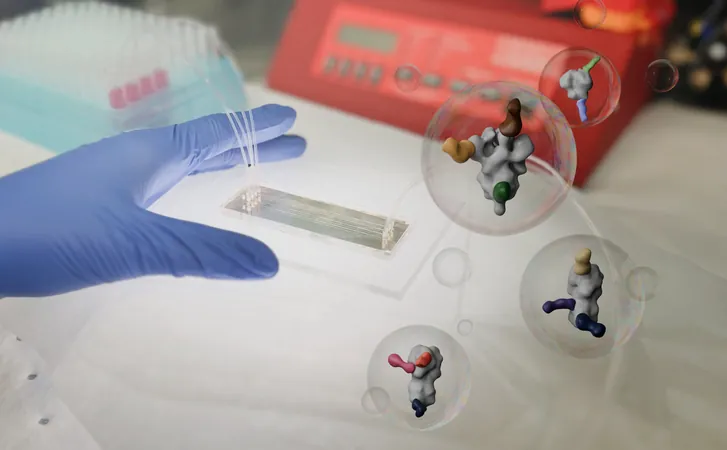
Revolutionary Microchip Transforms Vaccine Research with Rapid Antibody Mapping
2025-07-11
Author: Siti
In a groundbreaking breakthrough, scientists at Scripps Research have unveiled a new microchip that can transform the way we understand antibodies and their interactions with viruses—using just a drop of blood!
This innovative technology promises to expedite vaccine development and antibody discovery, providing researchers with rapid insights that were previously unattainable. "This allows us to capture a quick snapshot of antibodies as they evolve after vaccination or exposure to a pathogen," explains Andrew Ward, a leading professor at Scripps Research. "We've never been able to achieve this on such a swift timeline or with such minimal blood samples before!"
When the body encounters a virus or receives a vaccine, it produces antibodies to recognize and combat the foreign invader. However, not all antibodies attach strongly to the pathogen, and identifying which ones are most effective is crucial for optimizing vaccines. "Understanding which antibodies lead to the strongest protective responses against viruses helps us engineer better vaccines that elicit those immune responses," elaborates Leigh Sewall, a graduate student and co-author of the recent study published in Nature Biomedical Engineering.
Previously, Ward's team developed a method called electron microscopy-based polyclonal epitope mapping (EMPEM), which provided insights but had significant limitations. It took a week to complete and required substantial volumes of blood. During the COVID-19 pandemic, the urgency for a faster method became apparent.
Enter the microfluidic EM-based polyclonal epitope mapping (mEM) system. This cutting-edge approach starts with just four microliters of blood—about one hundred times less than what was necessary for EMPEM. The blood is injected into a tiny, reusable chip containing viral proteins on a specialized surface. As the blood flows through, antibodies latch onto the viral proteins, and then the complex is released for imaging. Astonishingly, the entire process takes only about 90 minutes!
To validate the power of mEM, researchers tested it on both human and mouse samples that had been vaccinated against or infected with viruses such as influenza, SARS-CoV-2, and HIV. The new technique not only sped up the mapping of antibody interactions with these viruses but also uncovered new antibody binding sites that had eluded earlier methods.
In a remarkable twist, the team was able to track antibody evolution over time in individual mice post-vaccination—something previously impossible due to blood sample size limitations. "The ability to monitor individual responses over time was thrilling," Sewall remarked.
Looking ahead, the Scripps team aims to automate and multiplex the mEM system, potentially allowing dozens of samples to be processed simultaneously. This revolutionary technology could become an essential tool in vaccine development for a wide range of pathogens, from coronaviruses to malaria.
"This technology is invaluable in scenarios where sample volume is limited or rapid results are crucial," concludes Torrents de la Peña, a co-lead on the project. "Our goal is to make this sophisticated system accessible to a broader range of researchers as we continue to streamline its functionality."


 Brasil (PT)
Brasil (PT)
 Canada (EN)
Canada (EN)
 Chile (ES)
Chile (ES)
 Česko (CS)
Česko (CS)
 대한민국 (KO)
대한민국 (KO)
 España (ES)
España (ES)
 France (FR)
France (FR)
 Hong Kong (EN)
Hong Kong (EN)
 Italia (IT)
Italia (IT)
 日本 (JA)
日本 (JA)
 Magyarország (HU)
Magyarország (HU)
 Norge (NO)
Norge (NO)
 Polska (PL)
Polska (PL)
 Schweiz (DE)
Schweiz (DE)
 Singapore (EN)
Singapore (EN)
 Sverige (SV)
Sverige (SV)
 Suomi (FI)
Suomi (FI)
 Türkiye (TR)
Türkiye (TR)
 الإمارات العربية المتحدة (AR)
الإمارات العربية المتحدة (AR)